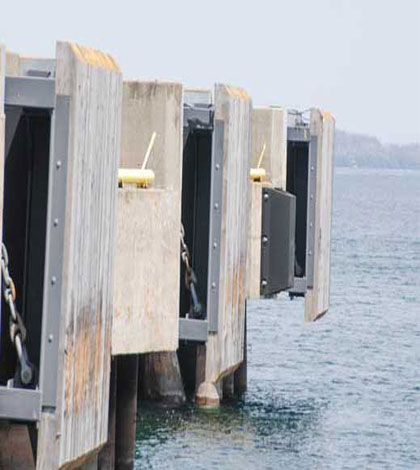MANITOULIN—Two projects being conducted by the Anishinabek/Ontario Fisheries Resource Centre (A/OFRC) and the Ministry of Natural Resources, both on Lake Mindemoya, will be used to evaluate the overall status of the Mindemoya Lake fishery.
Keith Nahwegahbow, fisheries technician with A/OFRC, told the Recorder on Tuesday, “We will be undertaking a broad scale monitoring (BSM) project on Lake Mindemoya. We’re partnering with M’Chigeeng more or less to look at the absence of fish populations and see what we have in terms of current fish populations in the lake.”
The M’Chigeeng First Nation, in conjunction with the A/OFRC, will be conducting the BSM on Mindemoya Lake from August 12-23. “Mindemoya Lake is within M’Chigeeng First Nation’s territory and serves as an important angling opportunity for community members. BSM is a provincial fisheries monitoring protocol that is used to assess fish community abundance and characteristics for inland lakes.”
“Basically we want to see what is there, and what’s not there,” said Mr. Nahwegahbow. “We work with the First Nations and M’Chigeeng had raised a concern with rainbow smelt, an invasive species, and cormorants in the lake. The rainbow smelt replaces forage species so there is less food for native fish. We are not specifically targeting a certain species of fish. We want to see what we have in terms of populations of all fish.”
Mr. Nahwegahbow explained, “The BSM is a new province-wide protocol developed by the MNR based on lake size and depths and what we will be doing is setting nets at different depths and sites selected. We will also take water chemistry tests, and ideal temperature profiles. All of this information will then go into a data base to compare with similar lakes of similar characteristics.”
“The MNR will be doing a fall walleye index netting (FWIN) survey this fall,” said Mr. Nahwegahbow. The FWIN survey will assess the overall status of walleye in Mindemoya Lake relative to provincial benchmarks that have been established for walleye.
“We are hopeful, this fall, of repeating our walleye index netting,” said Wayne Selinger of the MNR Espanola office. “This will be the fifth survey we will be doing on the lake. We have undertaken this project every four years since 1997, so this would be the fifth time. The reason we need to proceed with the netting is that we need to compare this year’s data with data recordings we have.”
Mr. Selinger explained, “This targets walleye and will tell us far more about the status of the walleye fishery. It gives us things like their growth rates, mortality rates and a lot more. We hope to do this survey this fall. The last one we did was in 2009 and it was documented that there were fairly substantial changes in the fishery. They were growing faster and maturing earlier and producing more eggs. The changes may have been due to invasive species and high angling pressure.”
“We are concerned with the walleye, but aren’t jumping to any conclusions,” said Mr. Selinger. “Hopefully we will see strong year classes and might be off to the races and back to the earlier populations. By doing both these studies we will get more information from the two surveys.”
Mr. Nahwegahbow pointed out that upon completion of these projects, the BSM and FWIN data will be combined to evaluate the overall status of the Mindemoya Lake fishery and to calibrate results of these provincially adopted fisheries protocols.
“With these projects we will get a good picture of the lake, so the First Nation (and the MNR) can make proper management decisions,” said Mr. Nahwegahbow.





